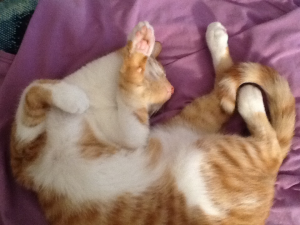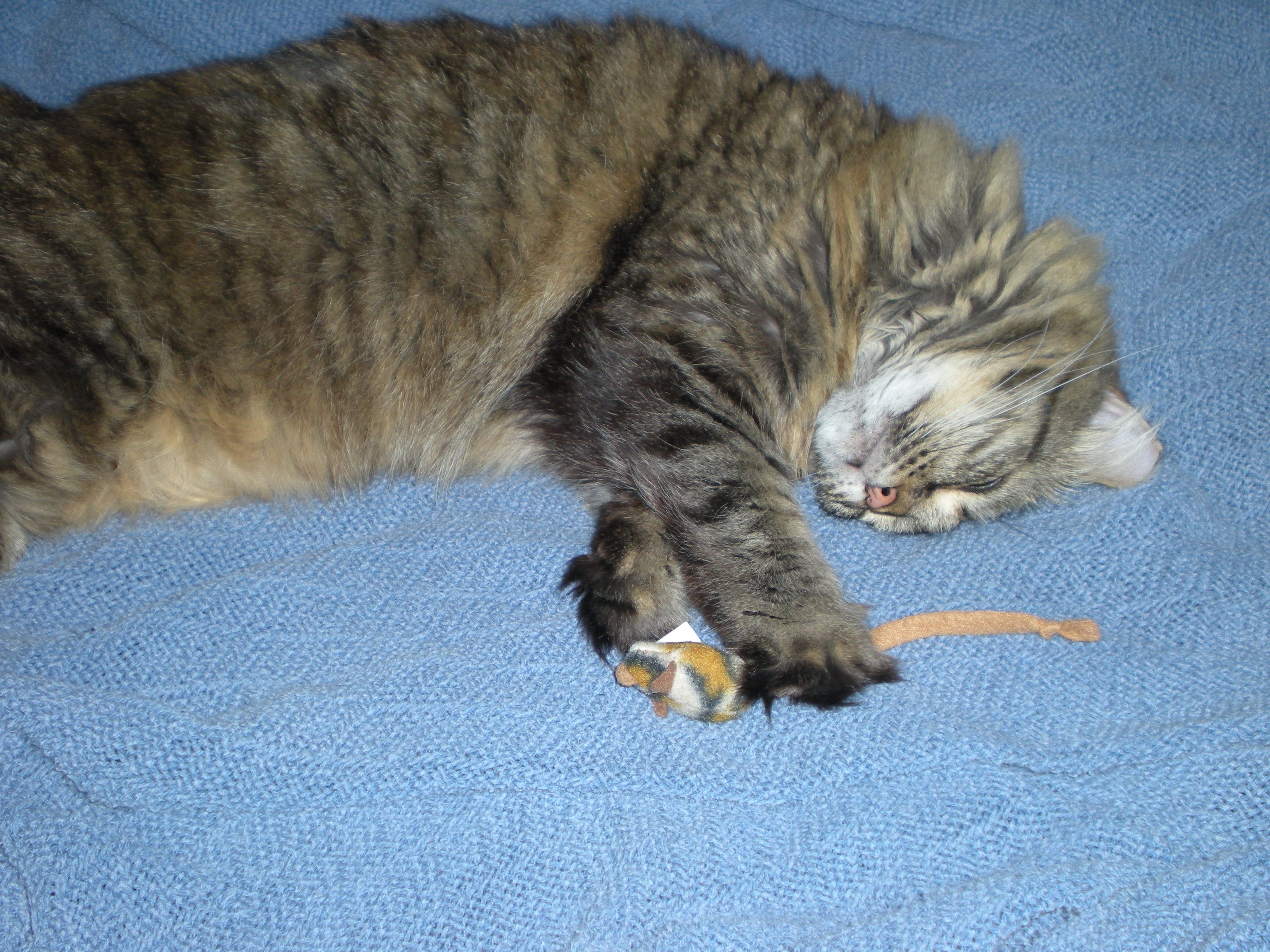
Veterinary journal articles estimate that approximately 25% of domestic cats in North America have been declawed.
First, you should know that declawing is pretty much an American thing. It’s something people do for their own convenience without realizing what actually happens to their beloved cat. In England declawing is termed “inhumane” and “unnecessary mutilation.”
Before you make the decision to declaw your cat, there are some important facts you should know. Declawing is serious surgery. Your cat’s claw is not a toenail. It is actually closely adhered to the bone. So closely adhered that to remove the claw, the last bone of the cat’s claw has to be removed. Declawing is actually an amputation of the last joint of your cat’s “toes”. When you picture that, it becomes clear why declawing is not a humane act. It is a painful surgery, with a painful recovery period. And remember that during the time of recuperation from the surgery your cat would still have to use its feet to walk, jump, and scratch in its litter box regardless of the pain it is experiencing.
The surgery
Your cat is put under general anesthesia and antiseptic soap is used to prepare the toes. To prevent excessive bleeding, a tourniquet is placed on the cat’s leg just under the elbow. The procedure is completed using two methods. In the scalpel technique, the surgeon grips the tip of the claw with a hemostat, and then uses the scalpel to carve out the third toe bone, severing skin, ligaments, tendons, nerves and blood vessels. In the guillotine blade method, a sterilized veterinary nail clipper is used instead to cut the tissue. Surgical glue or sutures are then used to close the wound. Usually bandages are applied. Pain medications are not always provided.
What are the potential complications of declawing?
1) Post-Surgical Complications
Abscesses and claw regrowth can occur days or weeks or many years after surgery. “In one study that followed cats for only 5 months after surgery, about 25% of cats developed complications from both declaw and tenectomy surgeries” (digital tenectomy or tendonectomy is a procedure, sometimes promoted as an “alternative” to declaw, where the tendons that extend the toes are cut).
2) Pain
It is impossible to know how much chronic pain and suffering is caused by declawing. It is virtually certain that all declawed cats experience phantom pain in one or more toes.
3) Joint Stiffness
In declawed cats, the toe joints essentially become “frozen” after surgery retraction. The toes remain fully contracted for the lifetime of the cat, even though they can no longer extend. The fact that most cats continue to “scratch” after they are declawed is often said to “prove” that the cat does not “miss” her claws. However, this could also be explained by the cat’s desperate desire to stretch those stiff, contracted joints.
4) Arthritis
Researchers have shown that, in the immediate post-operative period, newly declawed cats shift their body weight backward onto the large central pad of the front feet and off the toes. If this altered gait persists over time, it could cause stress on the leg joints and spine.
4) Litterbox problems
Some declawed cats develop litter box problems due to pain and discomfort.
In one survey, 95% of calls about declawed cats were related to litter box problems, while only 46% of clawed cats had such problems – and most of these were older cats, many with physical ailments that accounted for the behavior. The majority of litter box problems was
5) Biting
Some experts believe that naturally aggressive cats who are declawed are likely to become biters.
6) Death
All surgical procedures carry a small but real risk of death from general anesthesia. Declawed cats should not be allowed outside – their ability to defend themselves, and to escape danger by climbing, is seriously diminished.
Is LASER declawing okay?
It causes less bleeding and swelling than other techniques. This reduces pain and complications in the first few days after surgery, but the long-term implications of the procedure remain the same.
Many veterinarians in the U.S. have become accustomed to performing the declawing procedure without thinking about the consequences. However, the “top U.S. vet behaviorists and the American Veterinary Medical Association agree that declawing should not even be considered until after all other options, such as training or deterrents, have been tried.”
No cat lover would doubt that cats–whose senses are much keener than ours–suffer pain. They may, however, hide it better. They instinctively know that they are at risk when in a weakened position, and by nature will attempt to hide it. This is not a surgery to be taken lightly.
Your cat’s body is perfectly designed to give it the grace, agility and beauty that is unique to felines. It’s claws are an important part of this design. Amputating the important part of their anatomy that contains the claws drastically alters the conformation of their feet. The cat is also deprived of its primary means of defense, leaving him prey to predators if he ever escapes to the outdoors.
Now that you are aware that declawing may be too drastic a solution, are you still concerned about keeping your household furnishings intact? There are several acceptable solutions. You can teach your cat to use a scratching post. You can trim the front claws. One of the most highly recommend products available is Soft Paws®.
 Soft Paws® are lightweight vinyl nail caps that you glue on the cat’s front claws. They’re great for households with small children and are extremely useful for people who are away from home all day and can’t exercise the watchfulness necessary to train a cat to use a scratching post. Soft Paws® are easy to apply and last about four to six weeks.
Soft Paws® are lightweight vinyl nail caps that you glue on the cat’s front claws. They’re great for households with small children and are extremely useful for people who are away from home all day and can’t exercise the watchfulness necessary to train a cat to use a scratching post. Soft Paws® are easy to apply and last about four to six weeks.
You need to remember, though, that the caps and nail trimming should only be used on indoor cats who will not be vunerable to the dangers of the outdoors.
Despite all that you’ve read above, some people will always choose to declaw their cats. Their priority will always be their own convenience and safety of their belongings. The suffering it causes to the cat is not a significant concern. Fortunately most people consider their cats to be their “other” children and will want to do what’s best for all concerned.
Please make the humane choice and do not declaw!
Peace and Love are present in my world now,


 The inner layer of cow or horse hides are used to make rawhide. The hides are cleaned and or ground during the manufacturing process. Next they’re made into chewable different shapes and sizes. Some contain flavorings to make them more appealing.
The inner layer of cow or horse hides are used to make rawhide. The hides are cleaned and or ground during the manufacturing process. Next they’re made into chewable different shapes and sizes. Some contain flavorings to make them more appealing.
![]()










